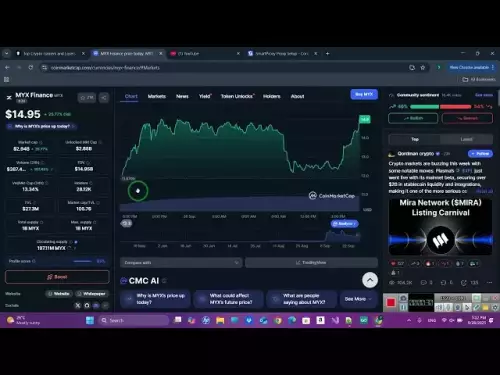-
 bitcoin
bitcoin $109547.008142 USD
0.04% -
 ethereum
ethereum $4011.838726 USD
-0.05% -
 tether
tether $1.000402 USD
-0.01% -
 xrp
xrp $2.798606 USD
0.88% -
 bnb
bnb $970.877944 USD
1.39% -
 solana
solana $202.237275 USD
-0.95% -
 usd-coin
usd-coin $0.999673 USD
0.00% -
 dogecoin
dogecoin $0.229294 USD
-1.15% -
 tron
tron $0.336370 USD
-0.45% -
 cardano
cardano $0.777260 USD
-1.66% -
 hyperliquid
hyperliquid $45.503019 USD
1.73% -
 ethena-usde
ethena-usde $1.000362 USD
0.01% -
 chainlink
chainlink $20.785303 USD
-1.10% -
 avalanche
avalanche $28.755822 USD
-0.11% -
 stellar
stellar $0.358303 USD
-0.48%
What is the best timeframe for Bitcoincoin trading
Dogecoin traders should choose timeframes based on their strategy—scalpers use 1-minute to 1-hour charts, day traders favor 1-hour or 4-hour intervals, swing traders rely on daily charts, and long-term investors analyze weekly perspectives for broader trends and breakout signals.
Jul 07, 2025 at 04:00 pm

Understanding Timeframes in Cryptocurrency Trading
In cryptocurrency trading, a timeframe refers to the specific duration represented by each candlestick or bar on a price chart. Traders use different timeframes to analyze market trends and make informed decisions. The choice of timeframe is crucial because it directly affects how traders interpret data and execute trades. For Dogecoin (DOGE), which is known for its high volatility and community-driven price movements, selecting an appropriate timeframe becomes even more critical.
The most commonly used timeframes include 1-minute, 5-minute, 15-minute, 1-hour, 4-hour, daily, weekly, and monthly charts. Each offers a unique perspective depending on whether you're a scalper, day trader, swing trader, or long-term investor. The best timeframe ultimately depends on your trading strategy, risk tolerance, and investment goals.
Scalping and Intraday Trading with Dogecoin
For traders who engage in scalping, very short timeframes such as 1-minute or 5-minute charts are typically used. These allow for quick entries and exits based on minor price fluctuations. Scalpers aim to capture small profits repeatedly throughout the day, often relying on technical indicators like moving averages, RSI, and Bollinger Bands to identify rapid entry and exit points.
- Ensure your internet connection is stable and fast
- Use a reliable exchange that supports real-time data
- Apply tight stop-loss orders to manage risk
- Focus on volume spikes and sudden news events affecting DOGE
Because Dogecoin can experience sharp price swings due to social media hype or celebrity endorsements, intraday traders might also find success using 15-minute or 1-hour charts. These timeframes help filter out some of the noise while still allowing for multiple trades per day.
Suitable Timeframes for Day Trading Dogecoin
Day traders usually avoid holding positions overnight and prefer timeframes that offer clear trend signals without excessive noise. A popular choice among many Dogecoin day traders is the 1-hour or 4-hour chart. These intervals provide a balanced view of both momentum and support/resistance levels.
Using a 4-hour chart, traders can apply tools like Fibonacci retracements, trendlines, and candlestick patterns to determine optimal trade setups. It’s important to cross-reference these signals with higher or lower timeframes to confirm strength and reduce false signals.
- Identify key resistance and support zones
- Watch for volume breakouts during major announcements
- Combine multiple indicators for confirmation
- Avoid overtrading during low-volume periods
Given the meme-driven nature of Dogecoin, monitoring social sentiment from platforms like Twitter and Reddit can enhance decision-making when combined with technical analysis on these timeframes.
Swing Trading and Medium-Term Strategies
If you're a swing trader, the daily chart is often considered the gold standard for analyzing Dogecoin's medium-term direction. Swing traders hold positions for several days to weeks, aiming to profit from larger price moves rather than intraday fluctuations.
On the daily chart, traders can better assess longer-term trends, historical price levels, and market psychology surrounding Dogecoin. Tools like MACD, RSI divergence, and moving average crossovers become more effective at this level.
- Monitor macroeconomic factors influencing crypto markets
- Analyze weekly volume and on-chain metrics
- Set realistic take-profit and stop-loss levels
- Keep track of upcoming events that may affect DOGE
Since Dogecoin often reacts strongly to external stimuli—such as tweets from Elon Musk or trending topics—the daily chart allows traders to see whether such reactions are sustainable or just temporary spikes.
Long-Term Investment and Weekly Charts
For those interested in holding Dogecoin as a long-term investment, the weekly chart provides the broadest perspective. This timeframe helps investors understand major cycles, seasonality effects, and institutional interest in DOGE.
While Dogecoin started as a joke cryptocurrency, it has gained enough traction to warrant serious consideration from some investors. On the weekly chart, traders can spot key accumulation zones, historical highs, and potential breakout levels that could signal future rallies.
- Study Bitcoin's influence on altcoins including DOGE
- Review blockchain activity and wallet distribution
- Assess adoption trends across exchanges and wallets
- Consider fundamental developments despite lack of whitepaper
It’s essential to note that long-term investing in Dogecoin carries significant risks due to its speculative nature. Investors should only allocate funds they are comfortable holding through extreme volatility.
Frequently Asked Questions
Q: Can I switch between different timeframes while trading Dogecoin?Yes, many traders use a multi-timeframe approach. For example, you might use a daily chart to determine the overall trend and then switch to a 4-hour or 1-hour chart for precise entry points.
Q: Does news have a bigger impact on shorter timeframes?Generally, breaking news affects shorter timeframes more intensely. However, if the news significantly alters the narrative around Dogecoin, it can also influence longer-term charts.
Q: Should beginners start with higher or lower timeframes?Beginners are often advised to start with higher timeframes like the daily chart because they tend to be less volatile and easier to interpret visually without getting overwhelmed by rapid price changes.
Q: Is there a universally accepted best timeframe for Dogecoin trading?No single timeframe works for all traders. The best timeframe depends on your trading style, strategy, and how much time you can dedicate to monitoring the markets.
Disclaimer:info@kdj.com
The information provided is not trading advice. kdj.com does not assume any responsibility for any investments made based on the information provided in this article. Cryptocurrencies are highly volatile and it is highly recommended that you invest with caution after thorough research!
If you believe that the content used on this website infringes your copyright, please contact us immediately (info@kdj.com) and we will delete it promptly.
- Ethereum's Price Dance: Will Crypto Rallies Keep the Music Playing?
- 2025-09-29 08:25:12
- Crypto Staking Spotlight: BlockDAG's Referral Revolution Outshines Avalanche & Meme Coin Hype
- 2025-09-29 08:45:16
- BlockDAG, SUI, Chainlink: Navigating the Crypto Landscape in 2025
- 2025-09-29 08:25:12
- XRP Price Gears Up: Breakout Signals and What to Watch
- 2025-09-29 08:30:01
- Bitcoin, Gold, and Digital Assets: Navigating the New Financial Frontier
- 2025-09-29 08:45:16
- UN Embraces Blockchain: A Pension Fund Success Story and a Glimpse into the Future
- 2025-09-29 08:50:01
Related knowledge

Bitcoincoin burning mechanism
Jul 20,2025 at 09:21pm
What is the Dogecoin burning mechanism?The Dogecoin burning mechanism refers to the process of permanently removing DOGE tokens from circulation by se...

How to earn free Bitcoincoin?
Jul 19,2025 at 10:08pm
What is Dogecoin and Why Earn It?Dogecoin (DOGE) started as a meme-based cryptocurrency in 2013 but has grown into a widely recognized digital asset. ...

Is Coinbase a good wallet for Bitcoincoin?
Jul 19,2025 at 04:42pm
Understanding Coinbase as a Wallet Option for DogecoinWhen considering where to store Dogecoin, Coinbase is often mentioned as a potential option due ...

How to buy Bitcoincoin with PayPal?
Jul 23,2025 at 06:57am
Understanding the Basics of Buying DogecoinBefore diving into the process of buying Dogecoin with PayPal, it’s essential to understand what Dogecoin i...

Best app to buy Dogecoin
Jul 23,2025 at 03:08pm
What Is a Cryptocurrency Exchange and How Does It Work?A cryptocurrency exchange is a digital marketplace where users can buy, sell, or trade cryptocu...

How are Dogecoin gains taxed?
Jul 25,2025 at 07:01am
Understanding the Taxation of Dogecoin GainsWhen it comes to Dogecoin (DOGE), many investors are drawn to its meme-inspired branding and volatile pric...

Bitcoincoin burning mechanism
Jul 20,2025 at 09:21pm
What is the Dogecoin burning mechanism?The Dogecoin burning mechanism refers to the process of permanently removing DOGE tokens from circulation by se...

How to earn free Bitcoincoin?
Jul 19,2025 at 10:08pm
What is Dogecoin and Why Earn It?Dogecoin (DOGE) started as a meme-based cryptocurrency in 2013 but has grown into a widely recognized digital asset. ...

Is Coinbase a good wallet for Bitcoincoin?
Jul 19,2025 at 04:42pm
Understanding Coinbase as a Wallet Option for DogecoinWhen considering where to store Dogecoin, Coinbase is often mentioned as a potential option due ...

How to buy Bitcoincoin with PayPal?
Jul 23,2025 at 06:57am
Understanding the Basics of Buying DogecoinBefore diving into the process of buying Dogecoin with PayPal, it’s essential to understand what Dogecoin i...

Best app to buy Dogecoin
Jul 23,2025 at 03:08pm
What Is a Cryptocurrency Exchange and How Does It Work?A cryptocurrency exchange is a digital marketplace where users can buy, sell, or trade cryptocu...

How are Dogecoin gains taxed?
Jul 25,2025 at 07:01am
Understanding the Taxation of Dogecoin GainsWhen it comes to Dogecoin (DOGE), many investors are drawn to its meme-inspired branding and volatile pric...
See all articles










































































